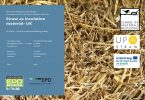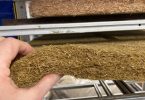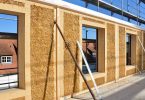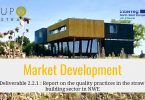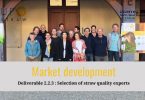The world population is growing at unprecedented rates and it is expected to reach 9.8 billion in 2050. Today, non-sustainable exploitation of non-renewable resources of the Earth due to the high demand of conventional building materials is already an important environmental issue, and for sure, this concern will become of vital importance in the future with rapidly growing world population. Utilization of alternative building materials in construction is a good way to effectively address this concern. Alternative building materials (ABMs) are low-cost building materials that aim to reduce or eliminate the environmental impact of the construction, simply by saving energy and resources, minimizing the emissions through the use of rapidly renewable materials, local resources, recycled content, industrial/agricultural byproducts/wastes, etc. This chapter aims to present prevailing ABMs for sustainable construction, such as bamboo, rammed earth, strawbale, supplementary cementitious materials, cork, mycelium, HempCrete, Ferrock, Papercrete, etc. Current strategies for ABMs are discussed with emphasis on sustainability concerns. Benefits of these materials and ten remarkable case studies benefiting from the use of ABMs such as 3D Printed Gaia House, Jill Strawbale House, The Higo, Hy-Fi Tower, The Acre, The EcoARK, etc. are also discussed.
Authors: Orhon, Ahmet Vefa; Altin, Müjde, Nov 2019


